Many years ago I wanted to have really bright light. I went way too far with 100'000 lumen HID fixture. It was so bright that I eventually left only 1 out of 7 lamps on which gives "mere" 14700 lumen. The light was nice and white, but it was far from perfect: it required 5 minutes cool-down to reignite it, 2 minutes warmup and was frying insects... It's spectrum had no gaps, but several distinct peaks (see first update for spectrum).
That is when I started thinking about switching to LED with corrected spectrum.
Our eye is the most sensitive in the green region, that is why having corrected spectrum in this area is essential for comfort of our eye. White LEDs give you alot of blue and orange-red colors, but not cyan-green ones. Advertised CRI index is misleading, as it is calculated by precision of rendering of a small, fixed set of colors. This is probably the last obstacle to LED widespread penetration including areas requiring perfect color rendering. Some people just don't like the hole in the green-cyan.
I've decided to try various combinations of extra LEDs to fill in the gap. Here is how generic White LED spectrum looks like (grey), and how I managed to correct it (blue):
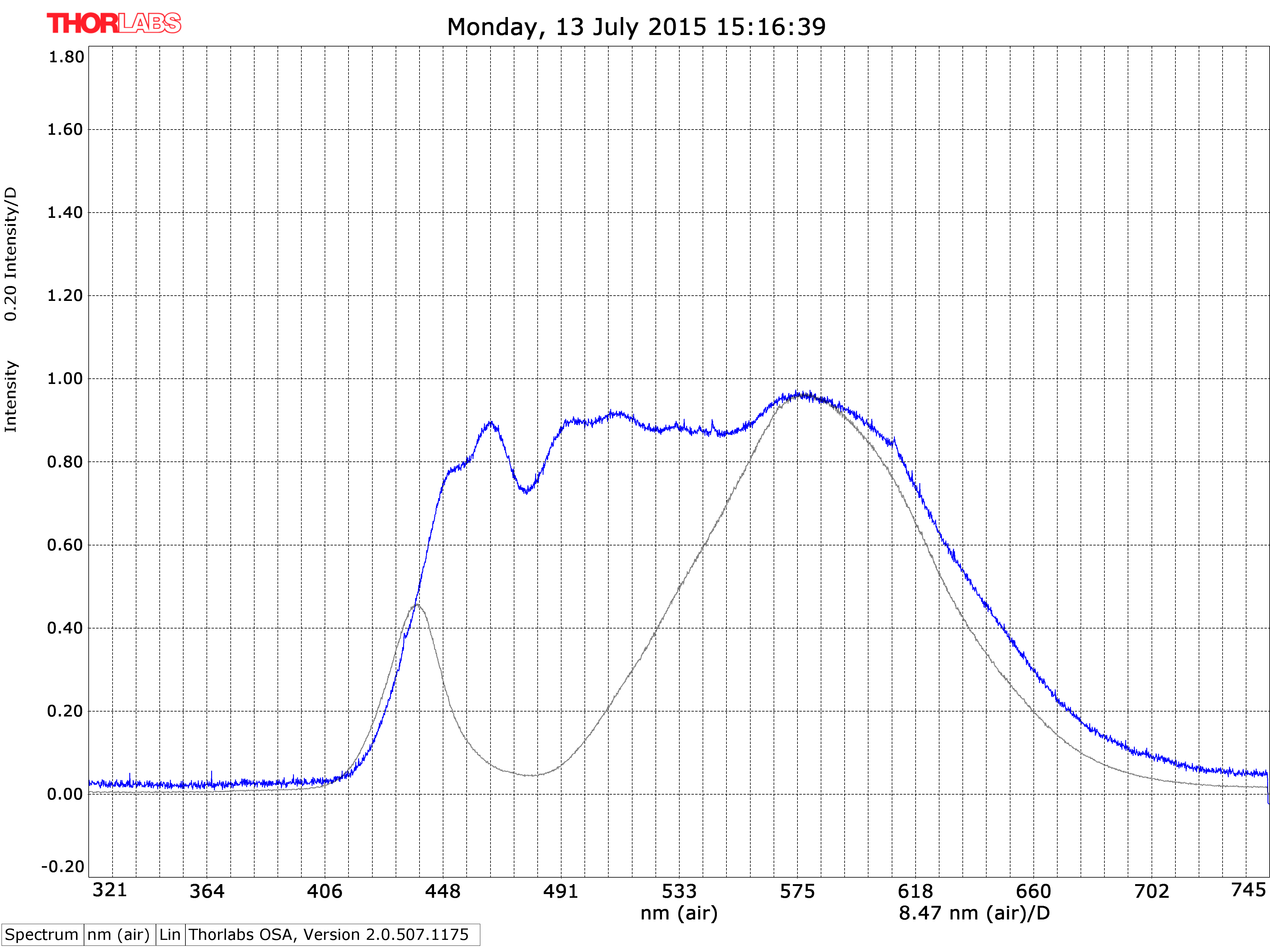
Final correction details are as follows: 40W 4000K white LED, 10x0.7A 495nm cyan, 5x0.5A 470nm blue, 5x0.5A 520nm green.
 Mikhail Svarichevsky
Mikhail Svarichevsky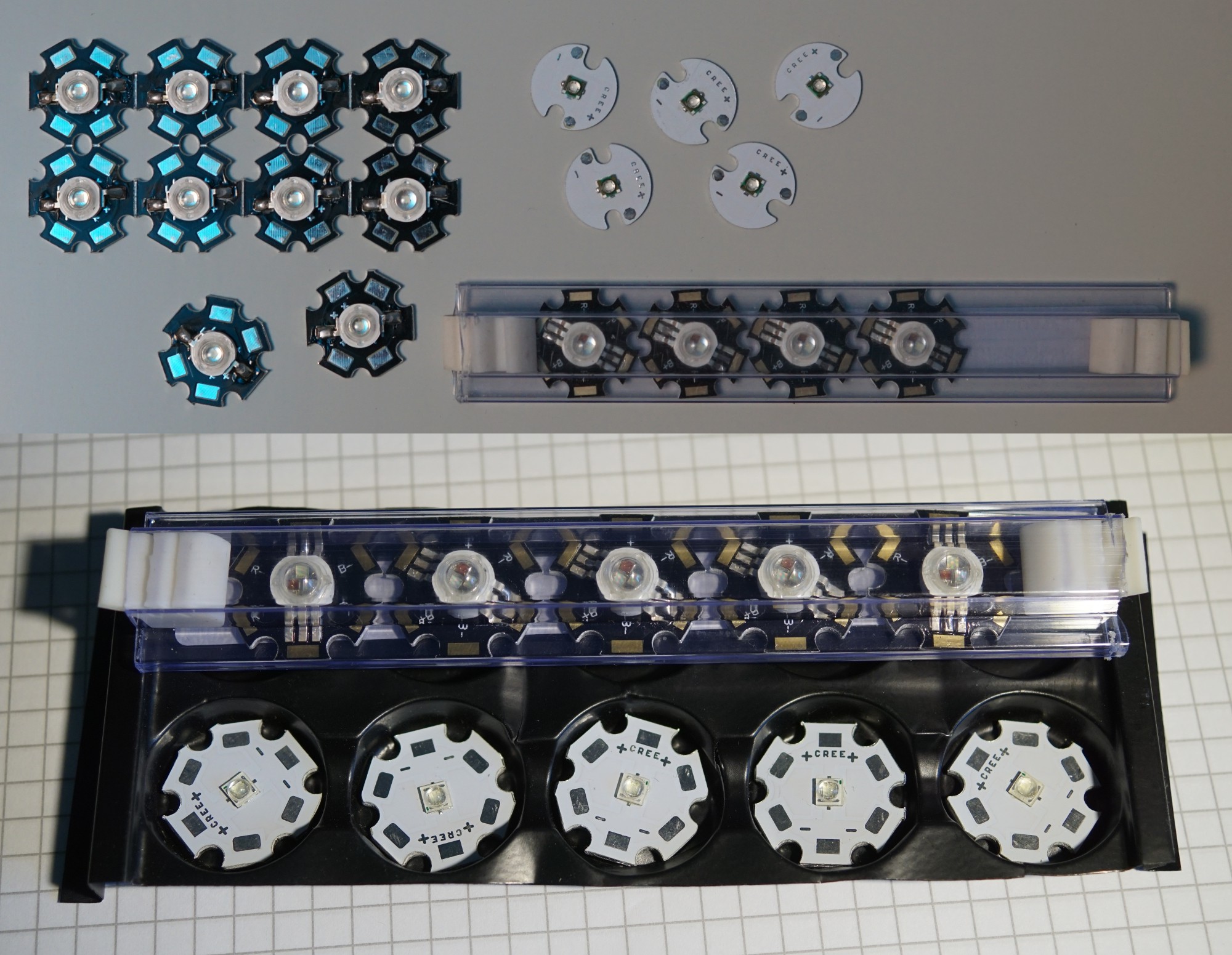
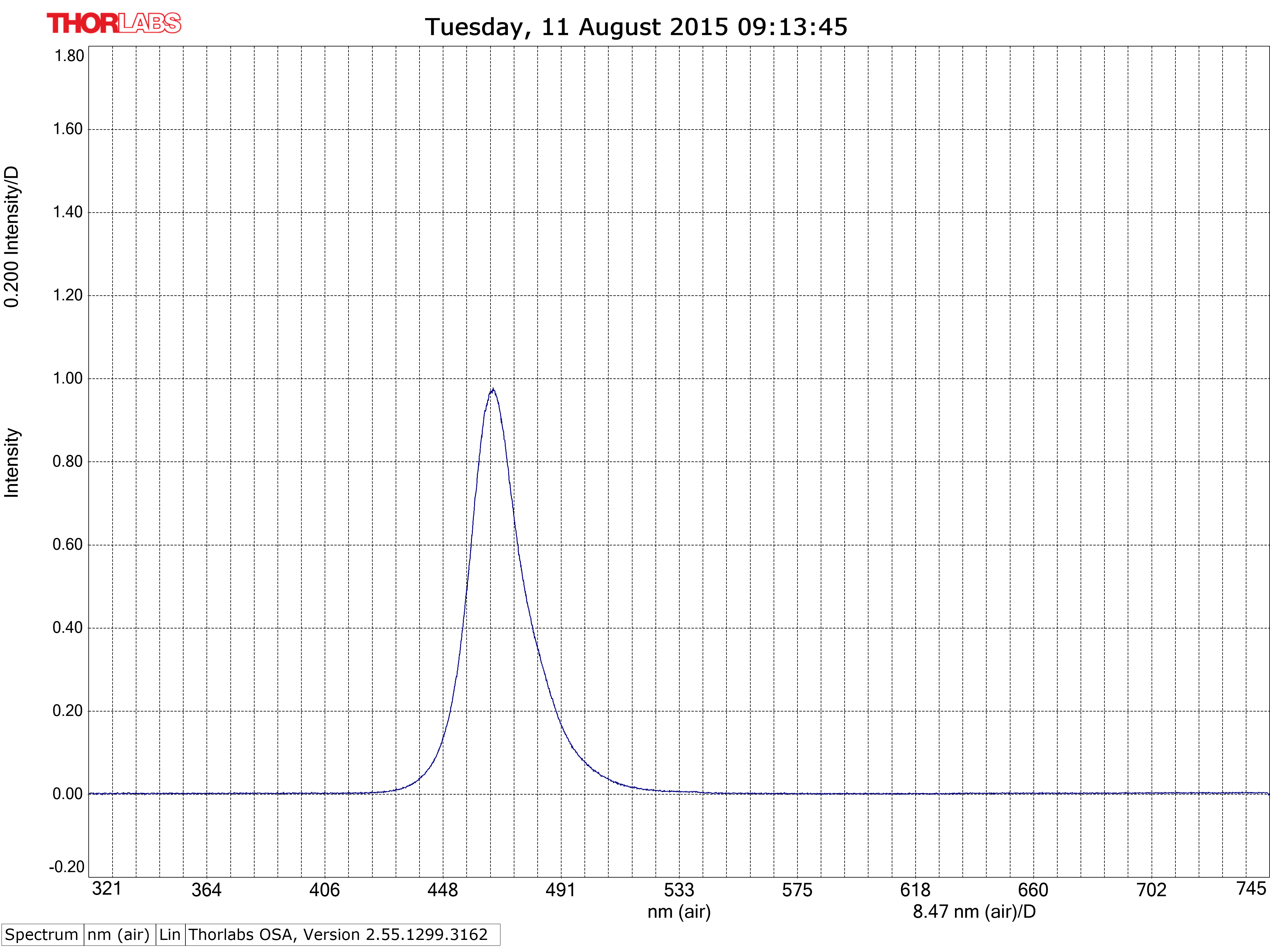
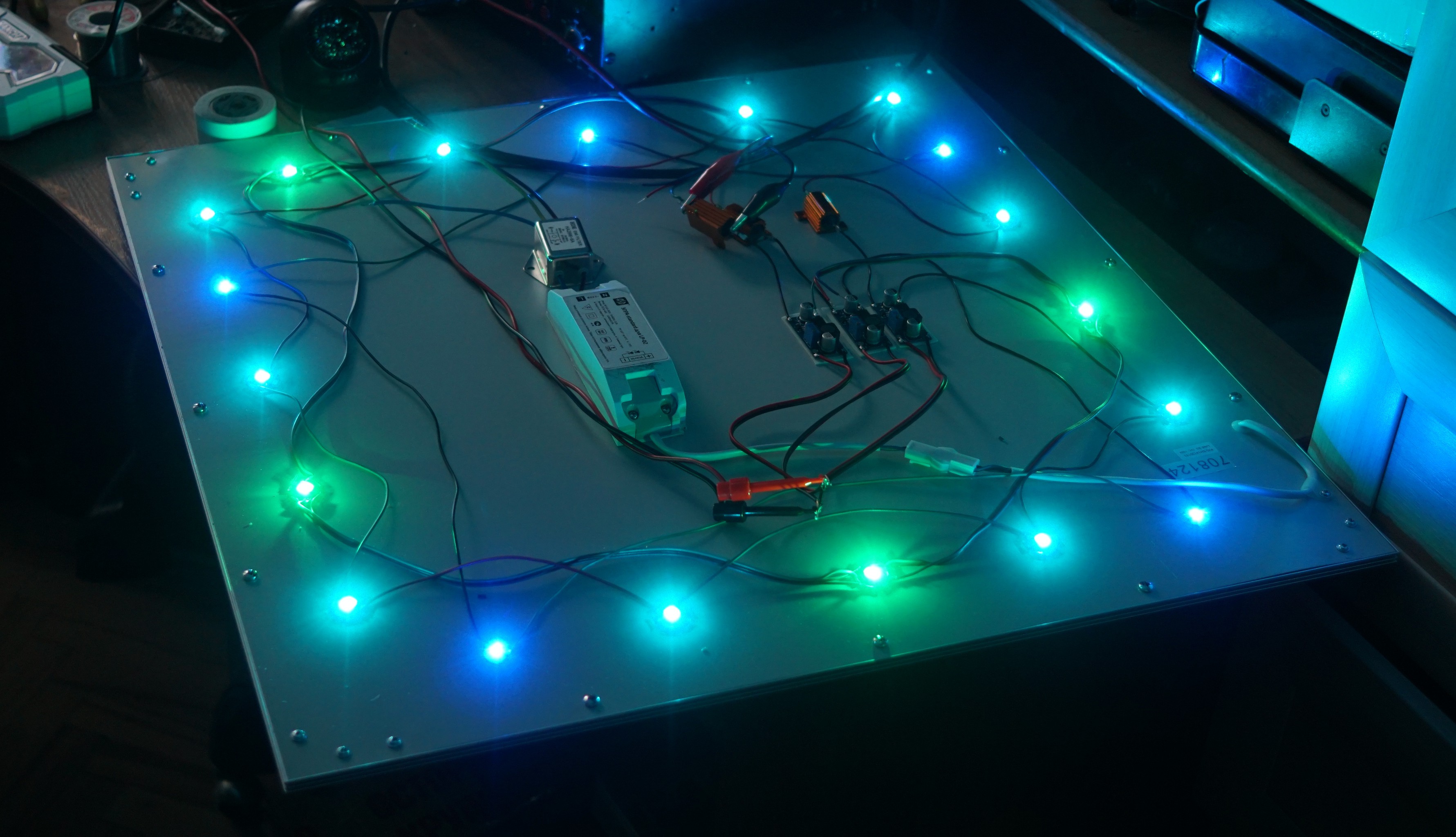
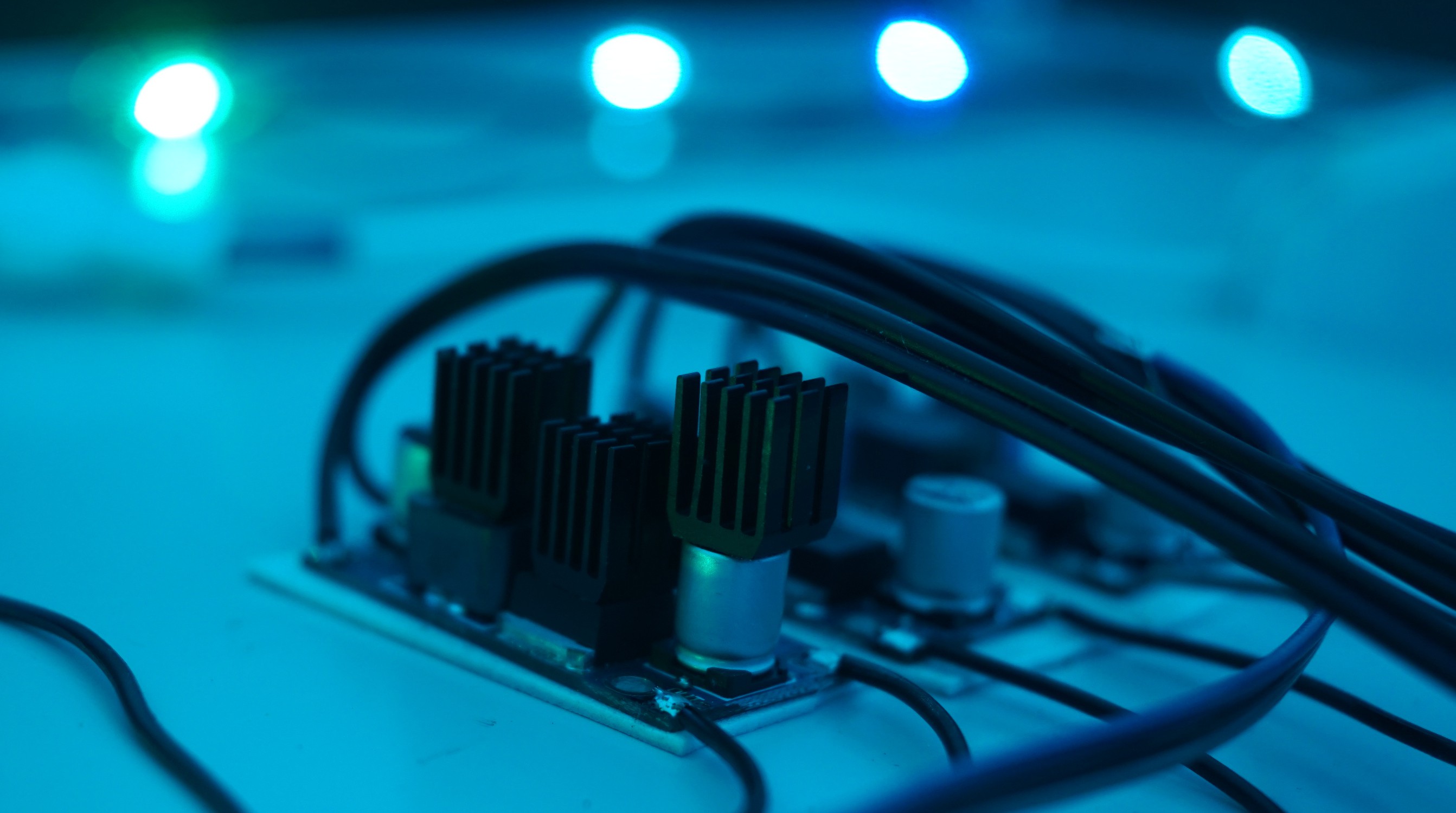
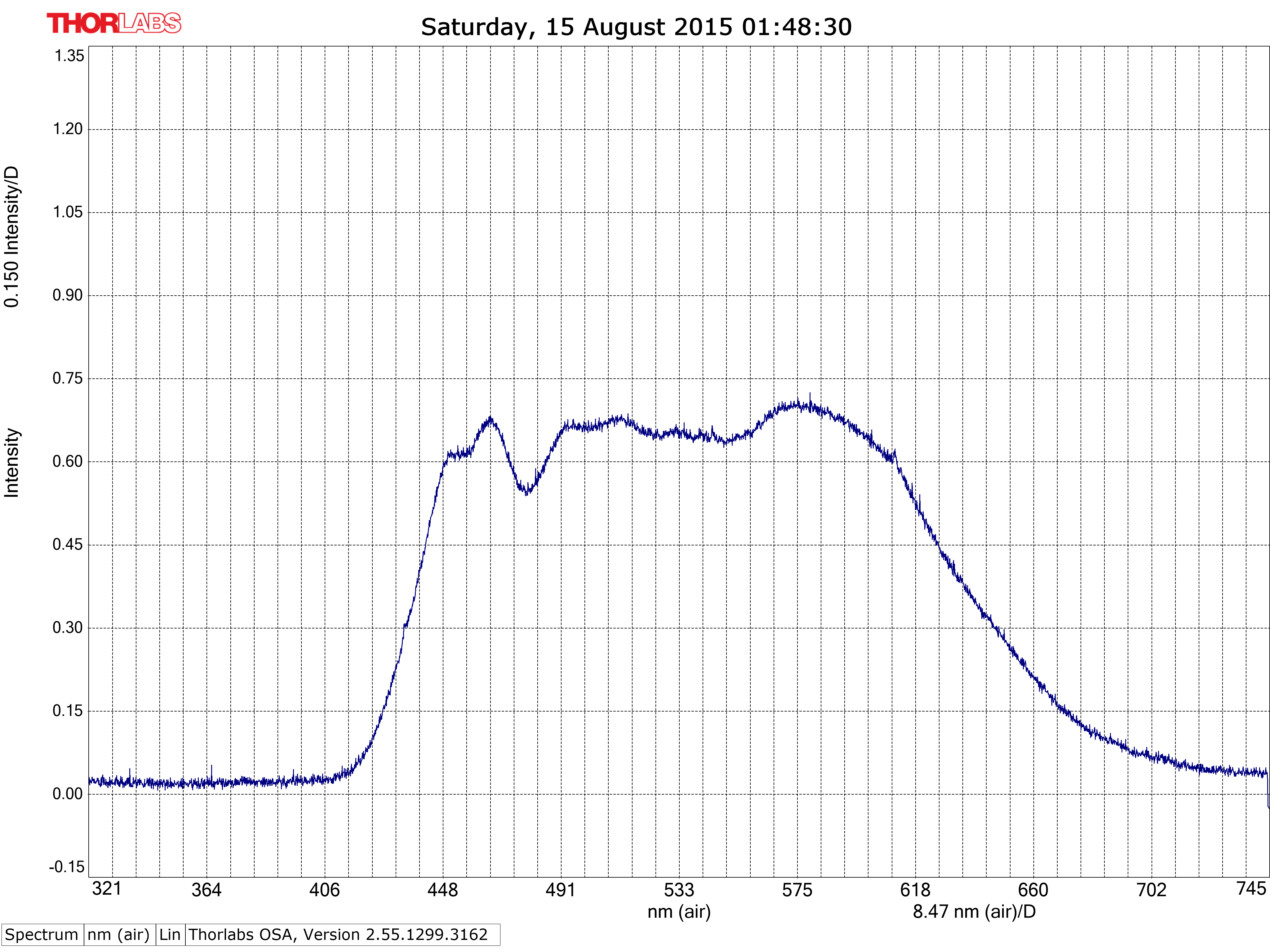

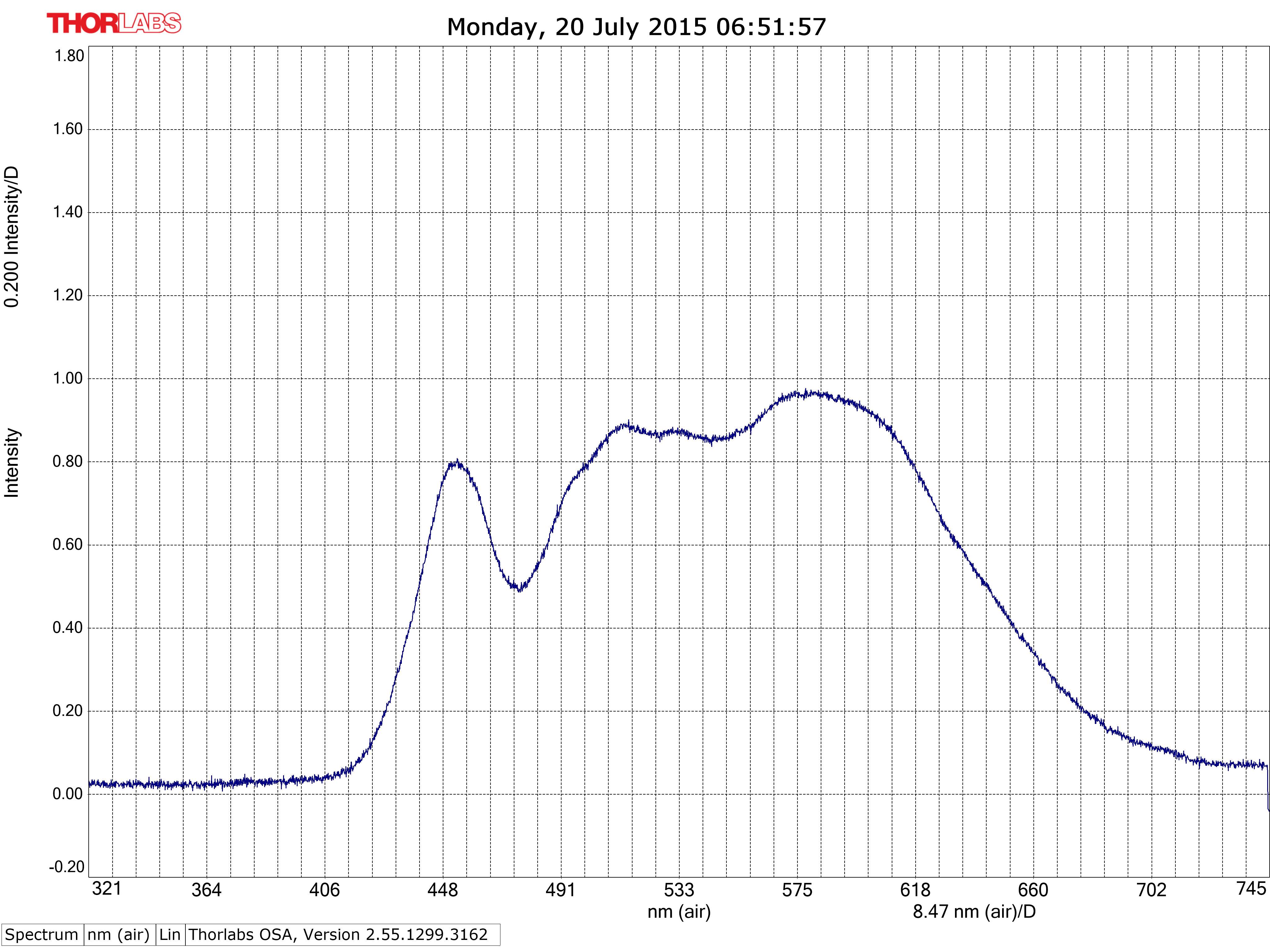
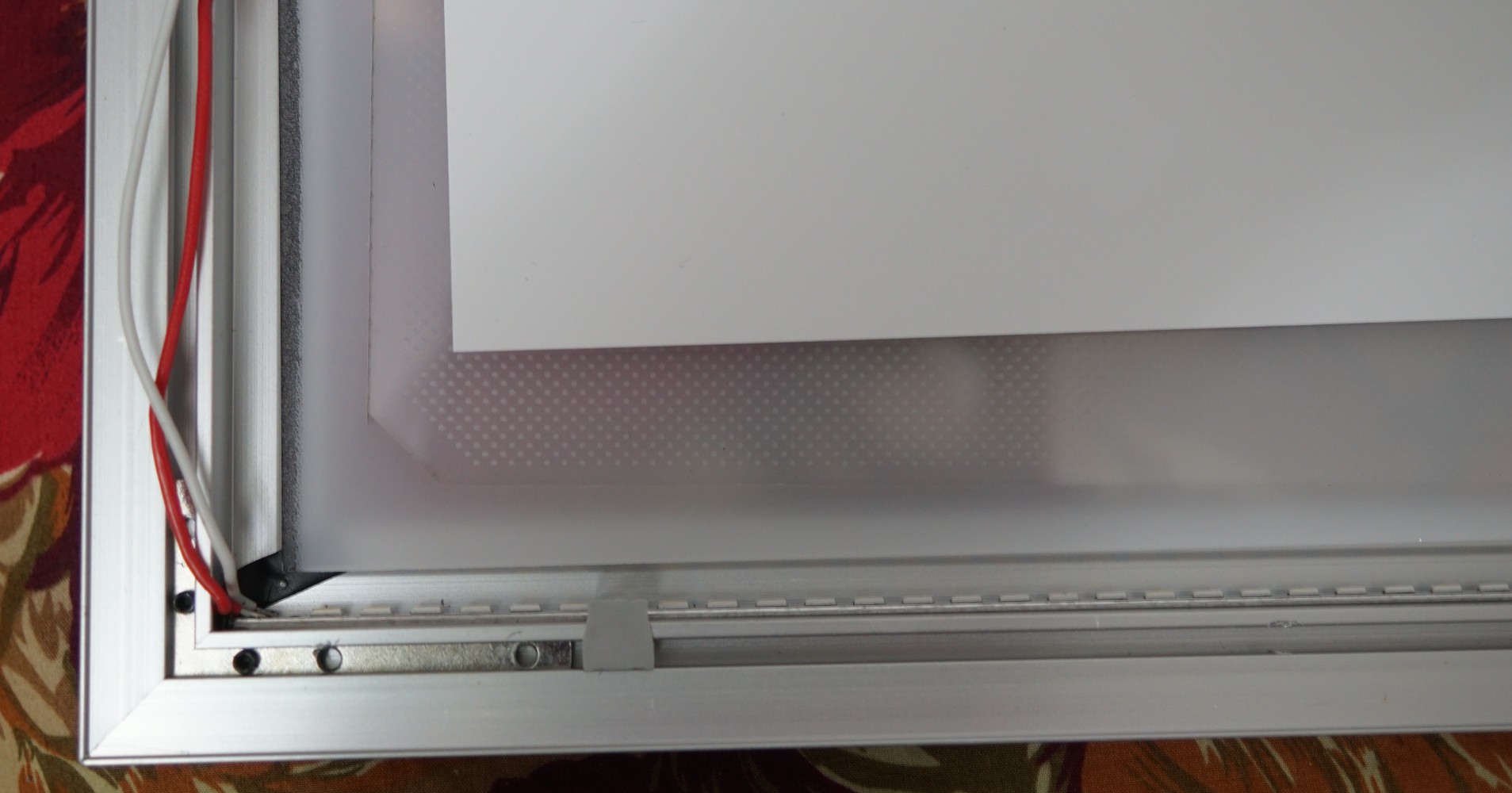
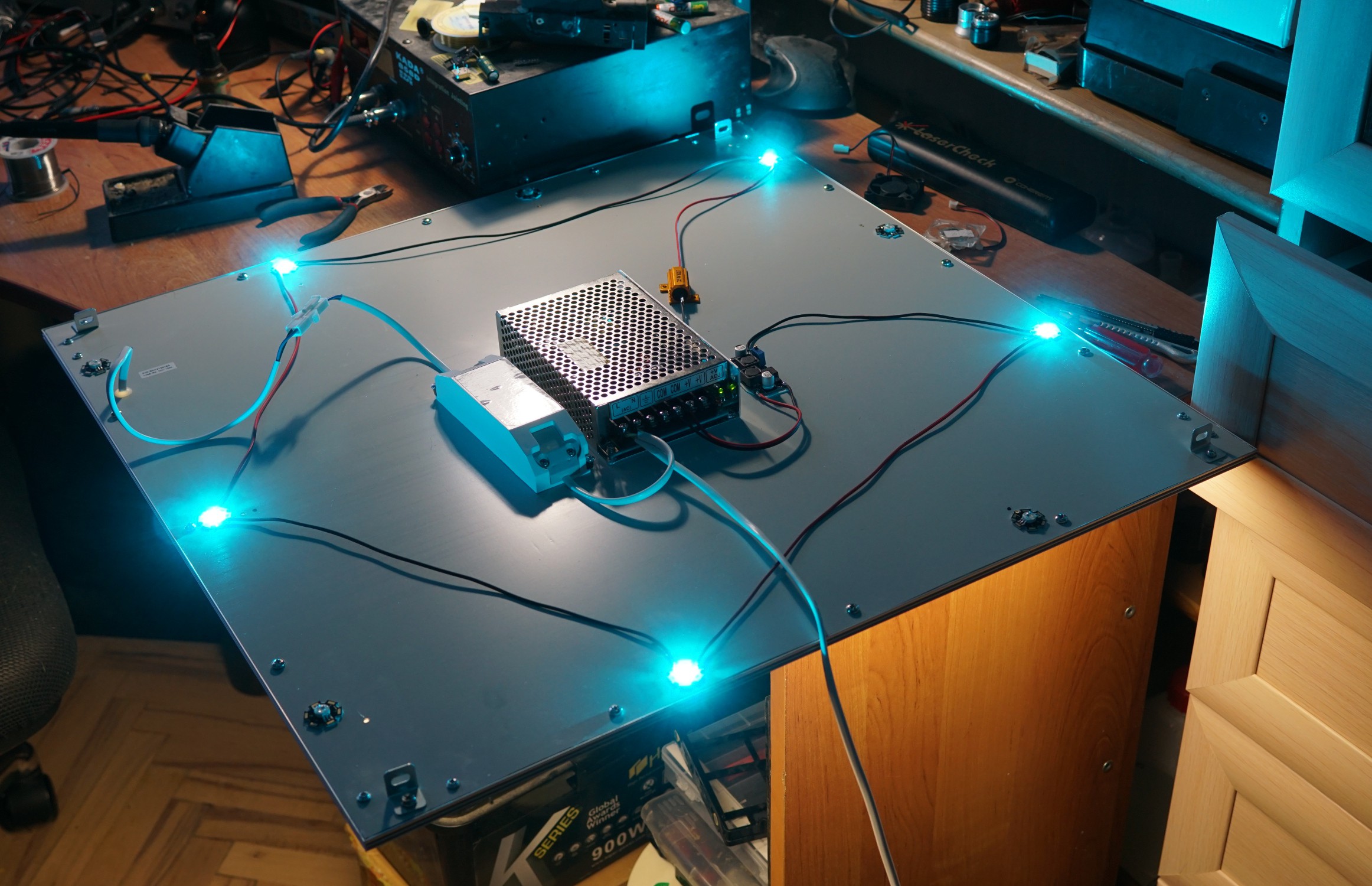
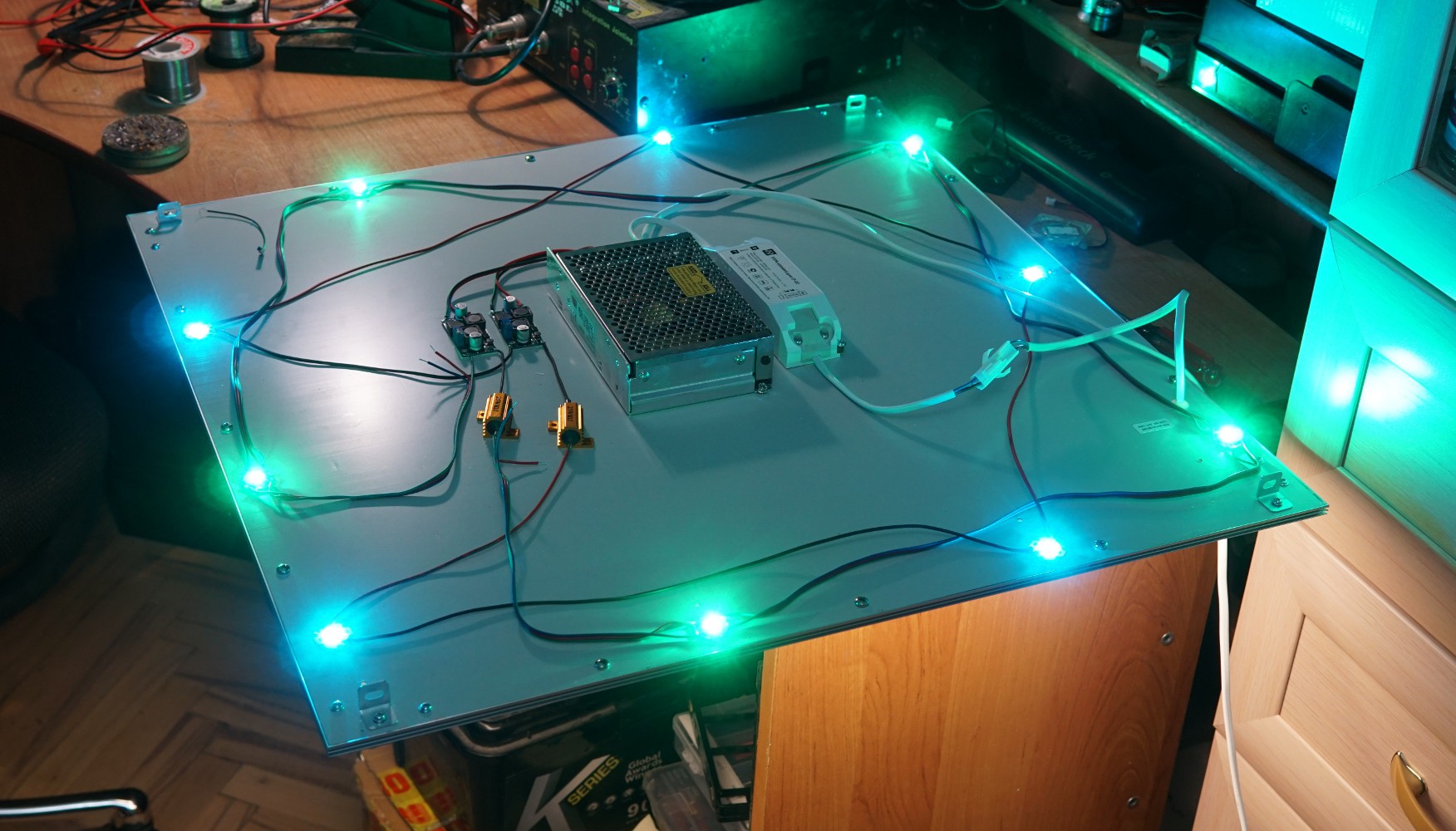
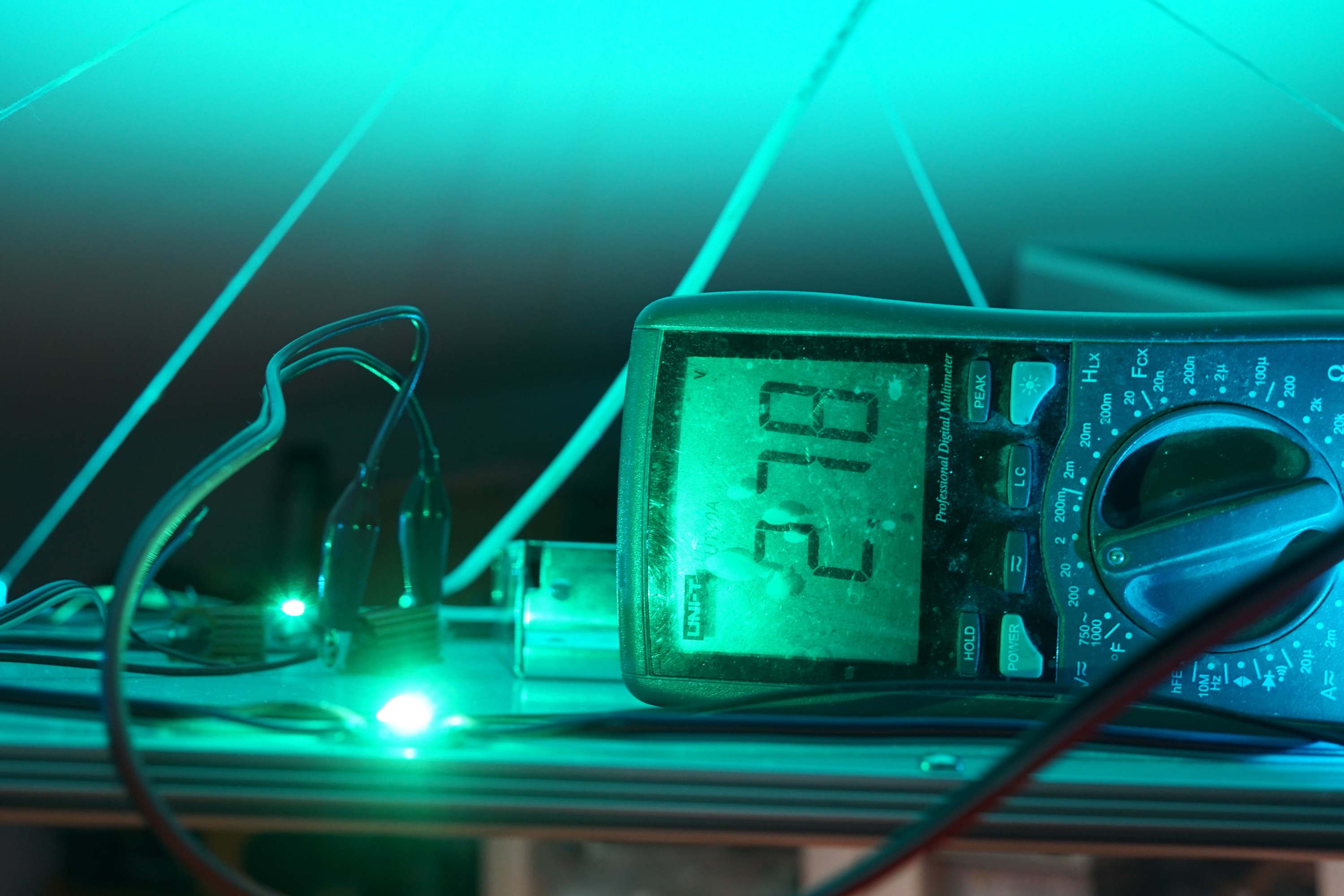
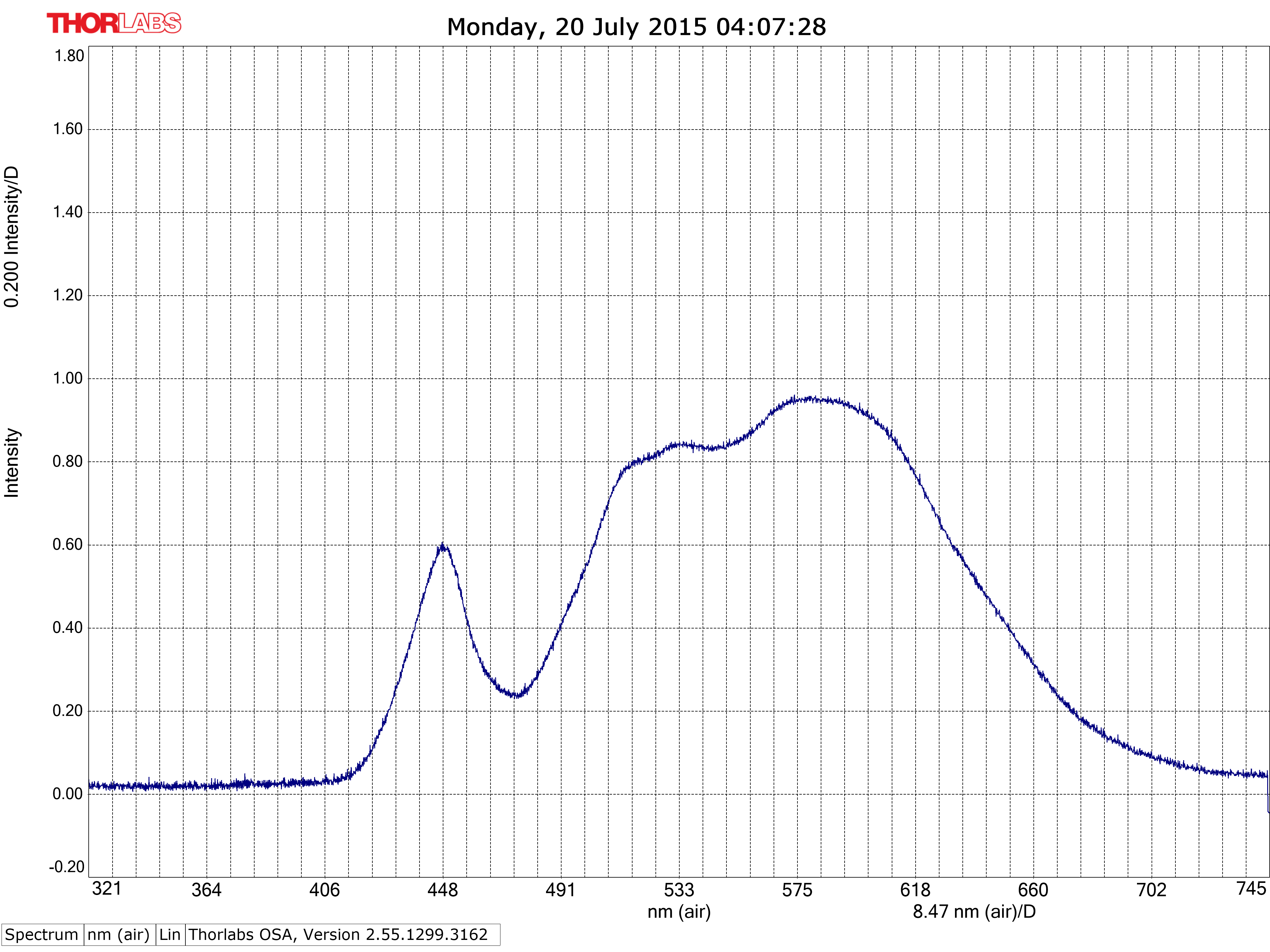
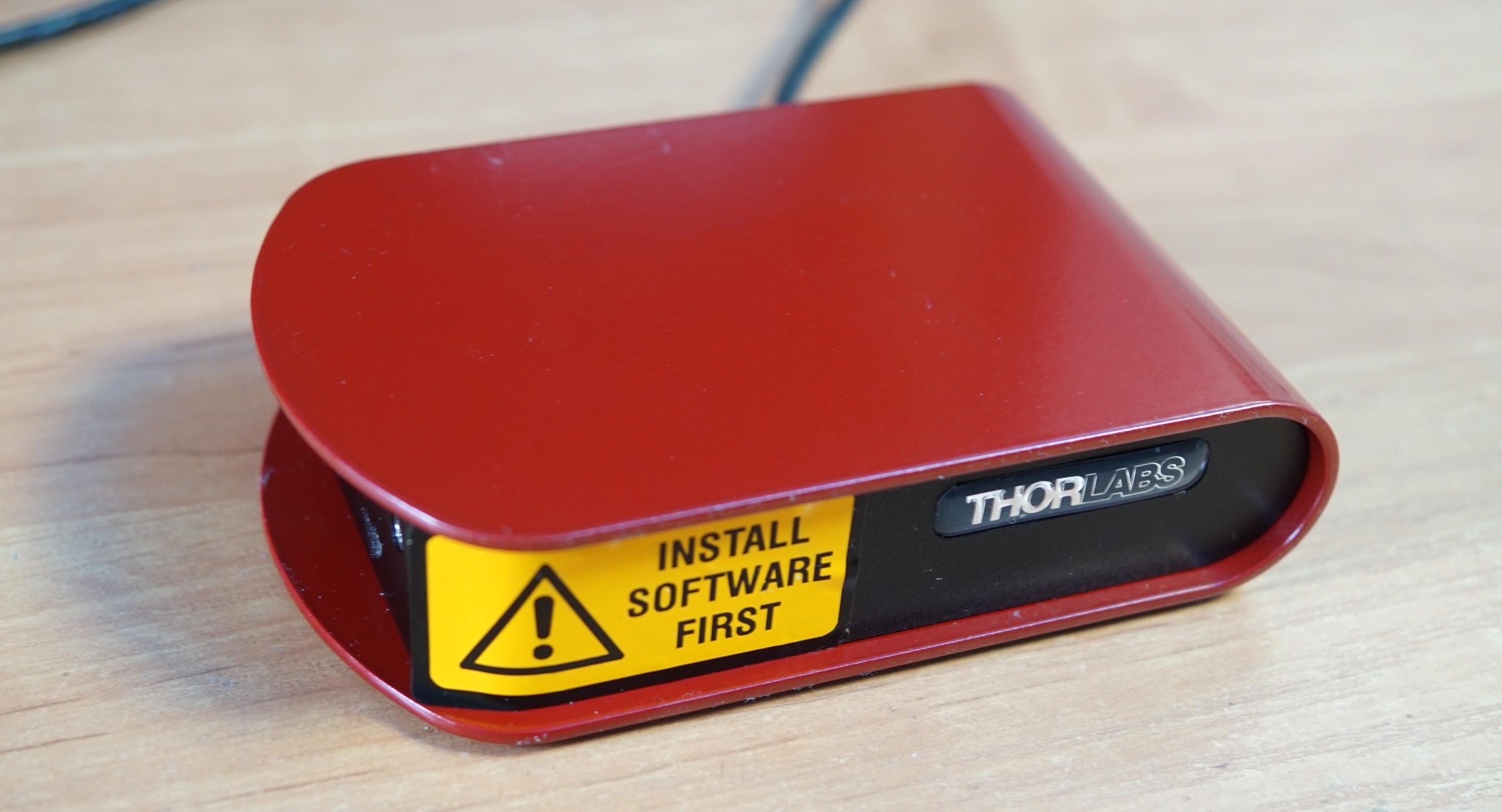

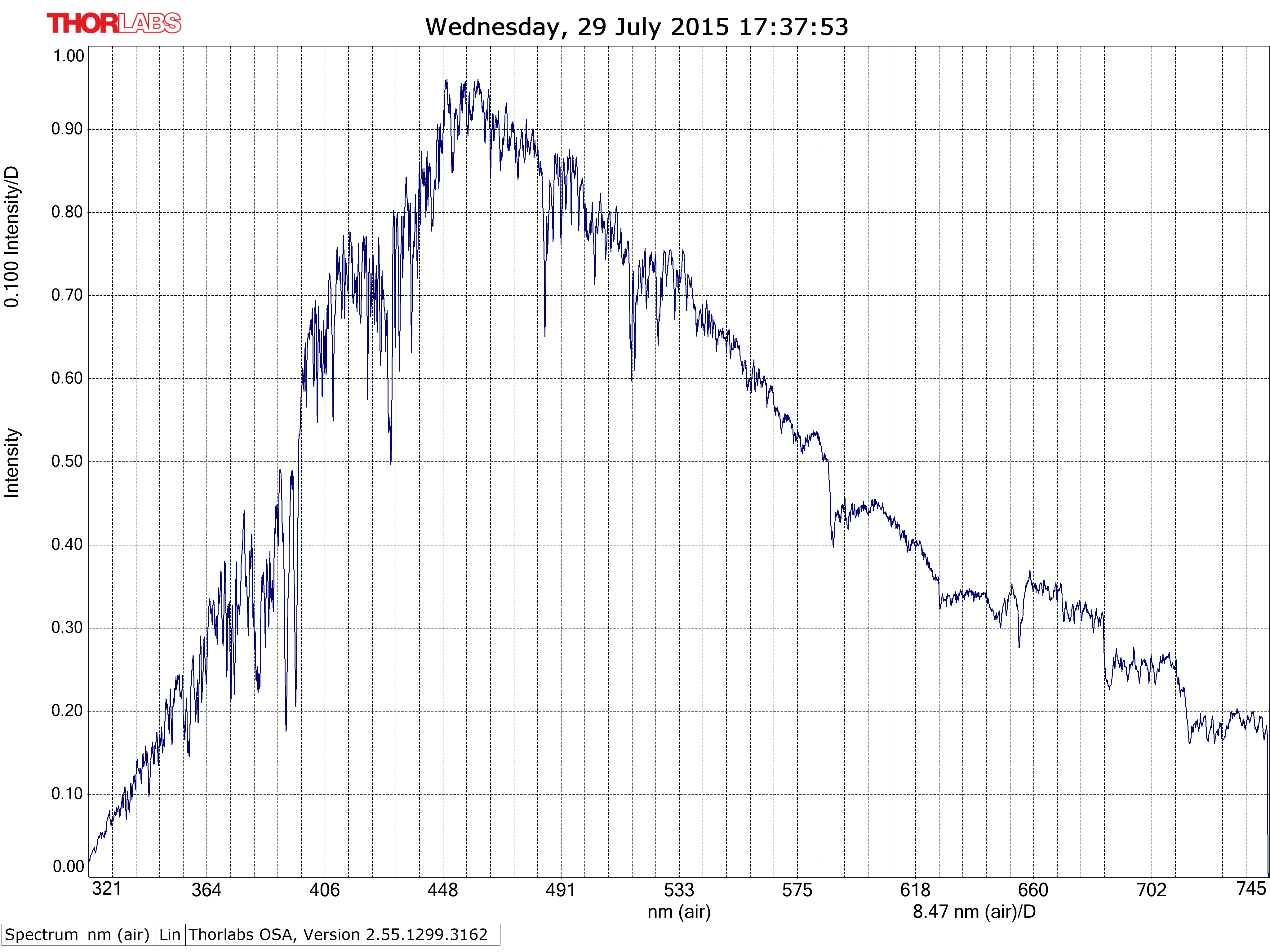
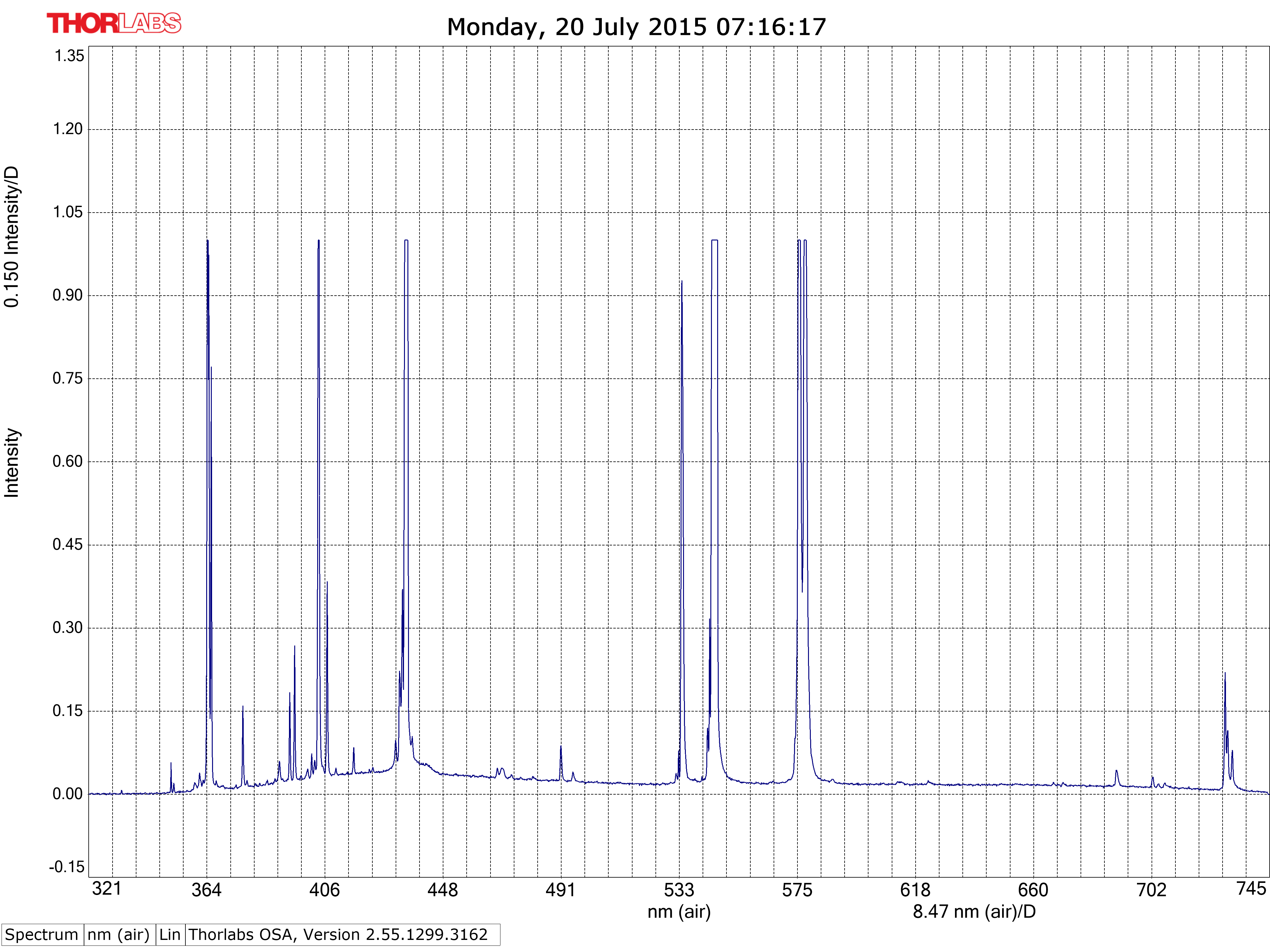
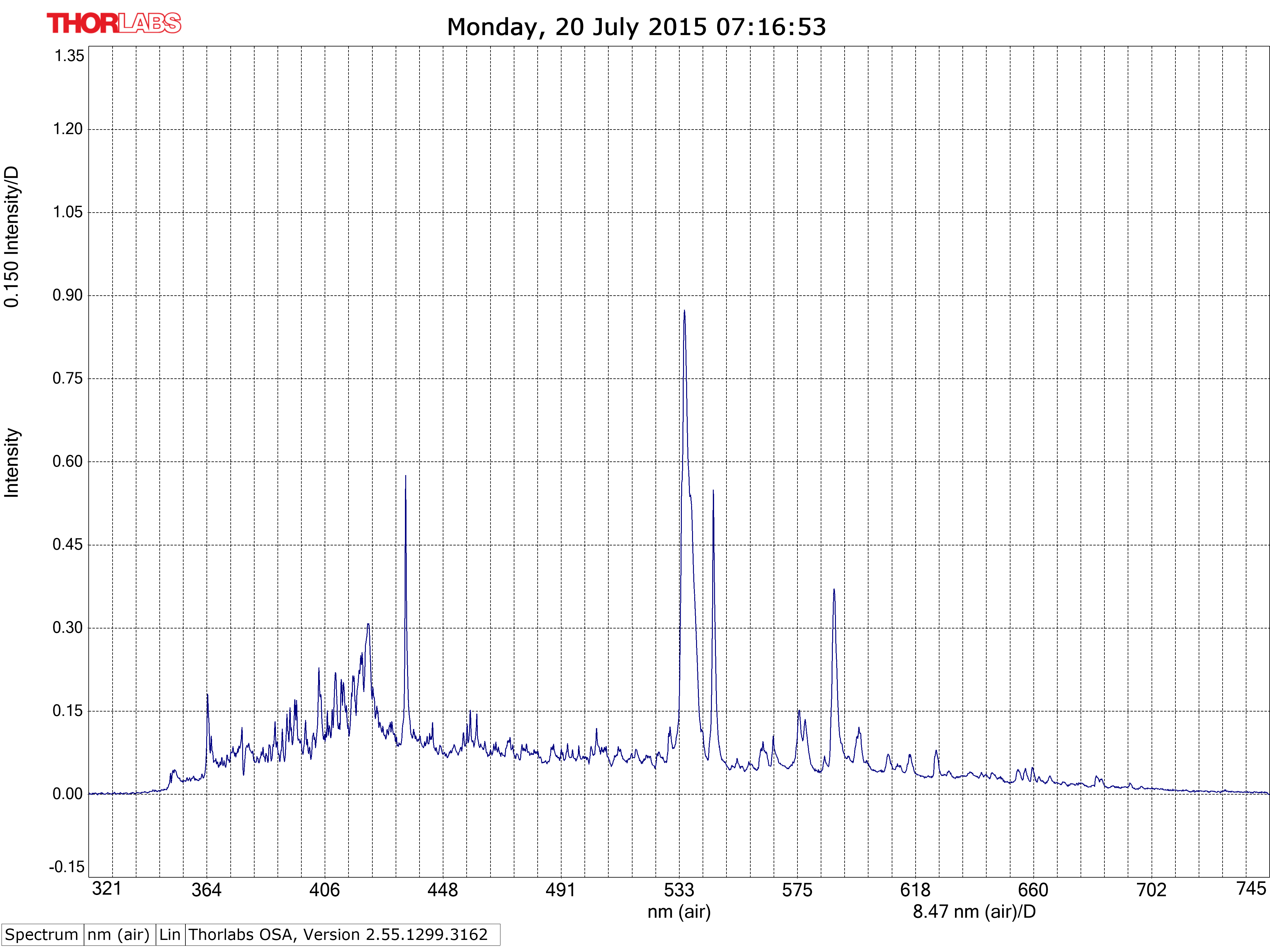
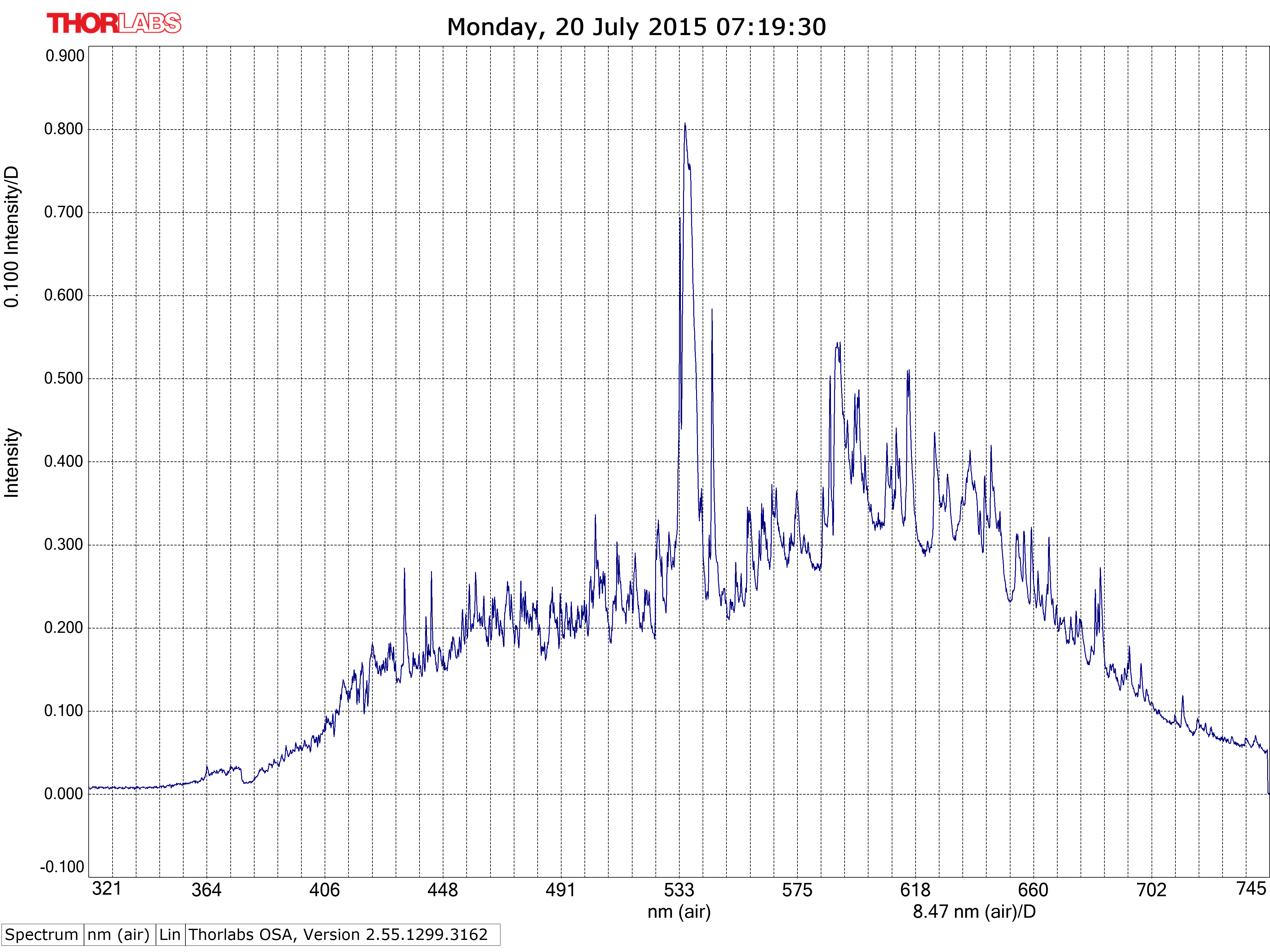

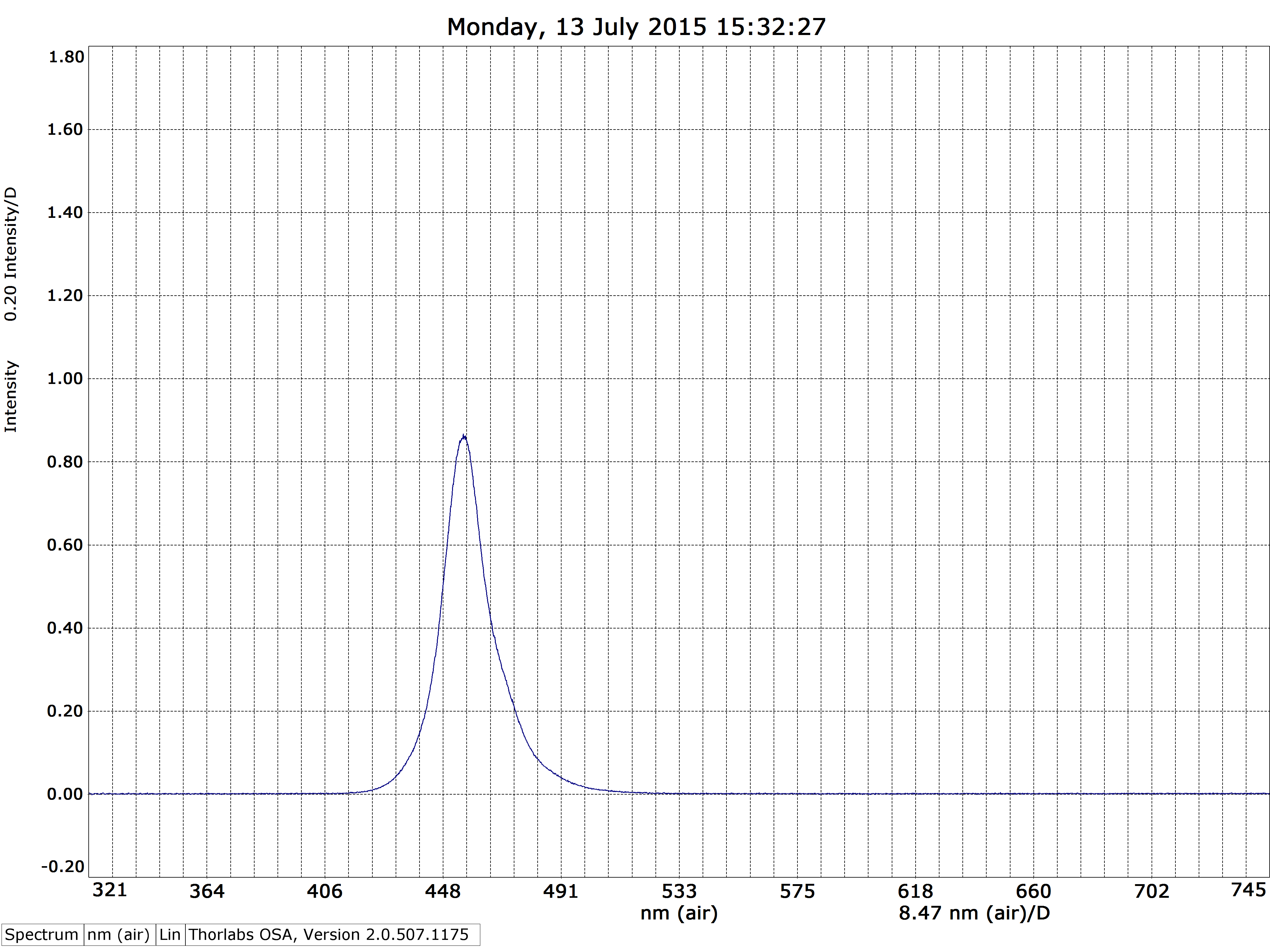
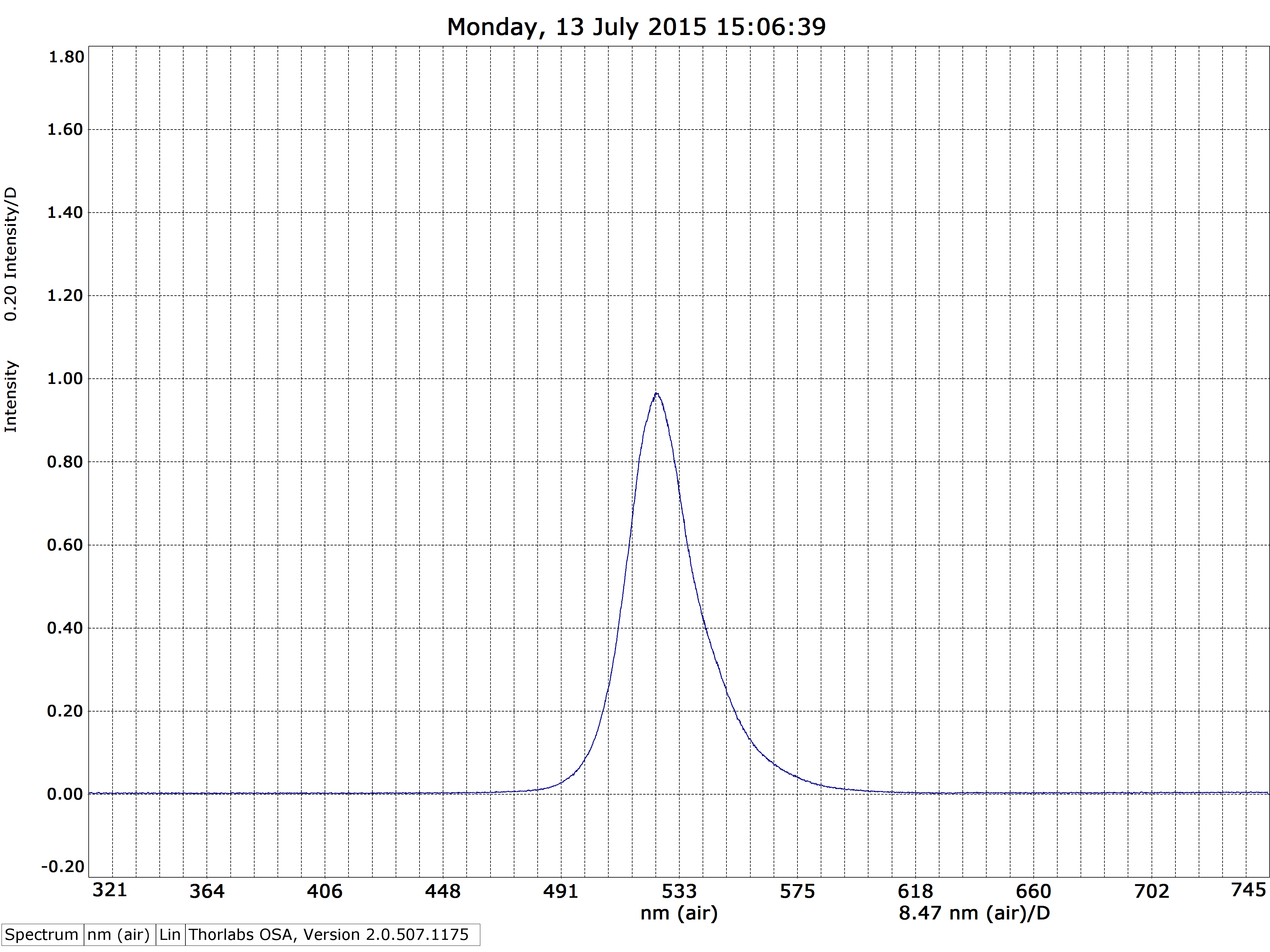
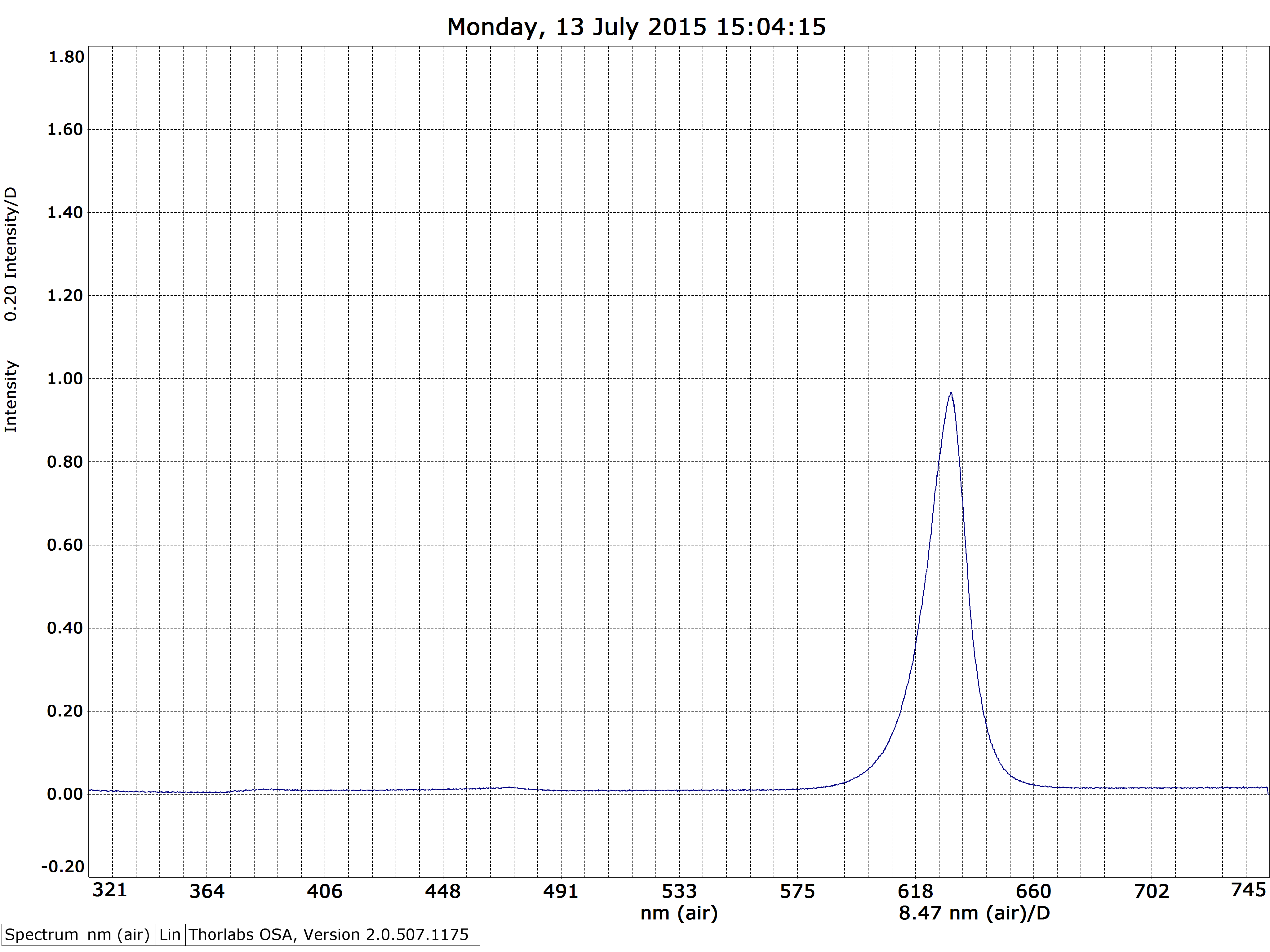
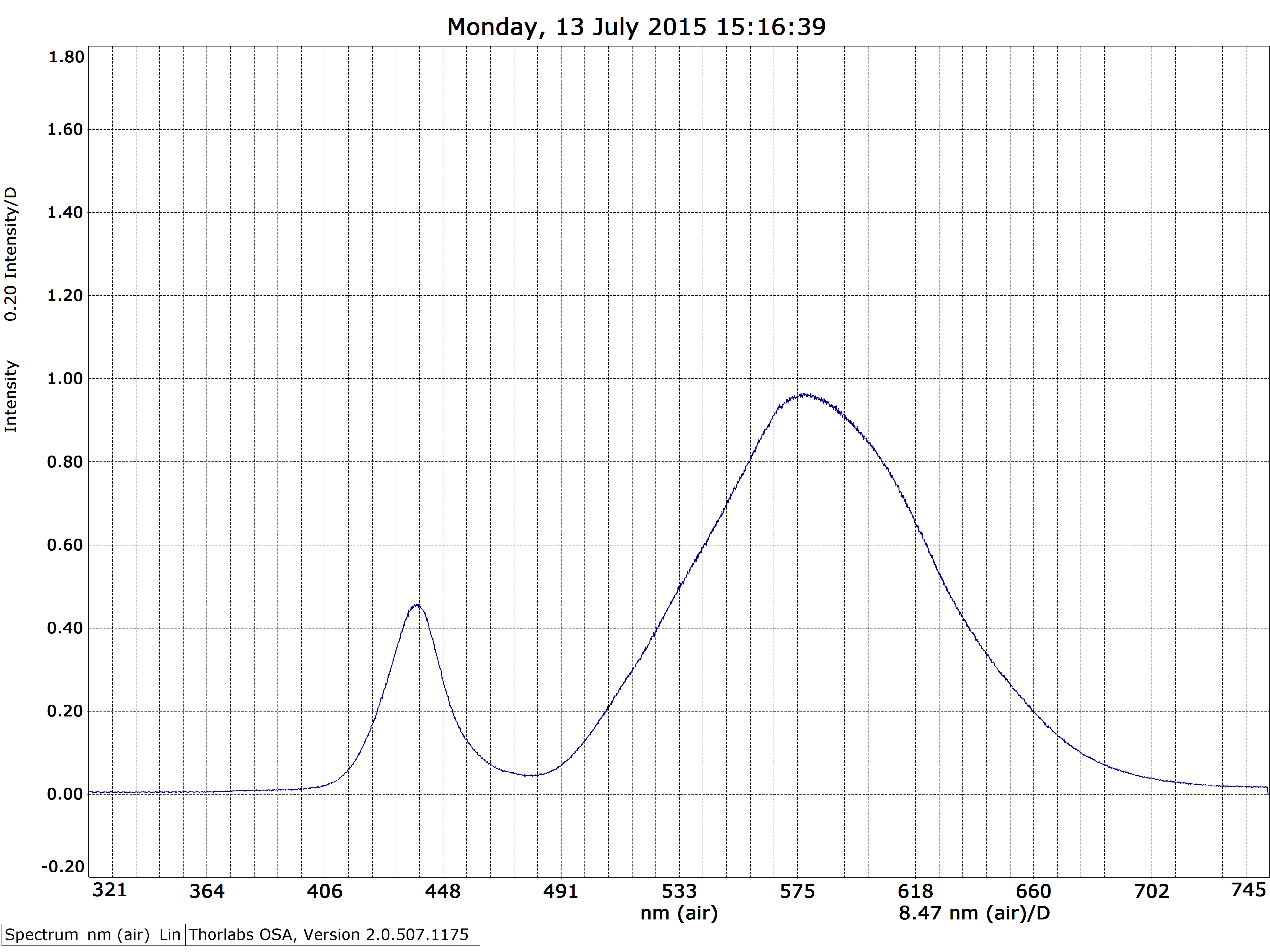




Great project ! I totally want to do something like that. I'm more interesed by an indirect lighting (reflection on ceiling) of all the spectrum. Do you thnik something similar could be achieved with led strips ?